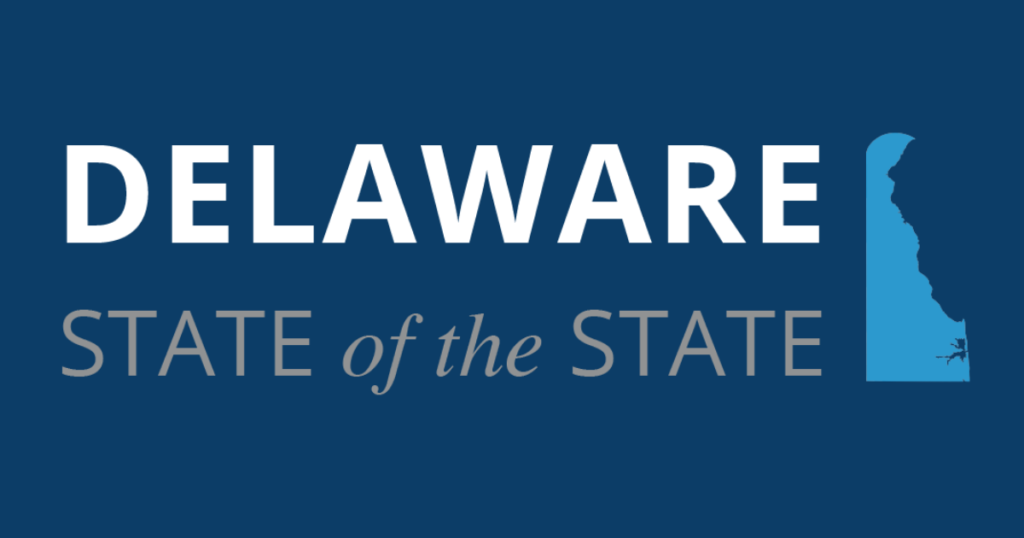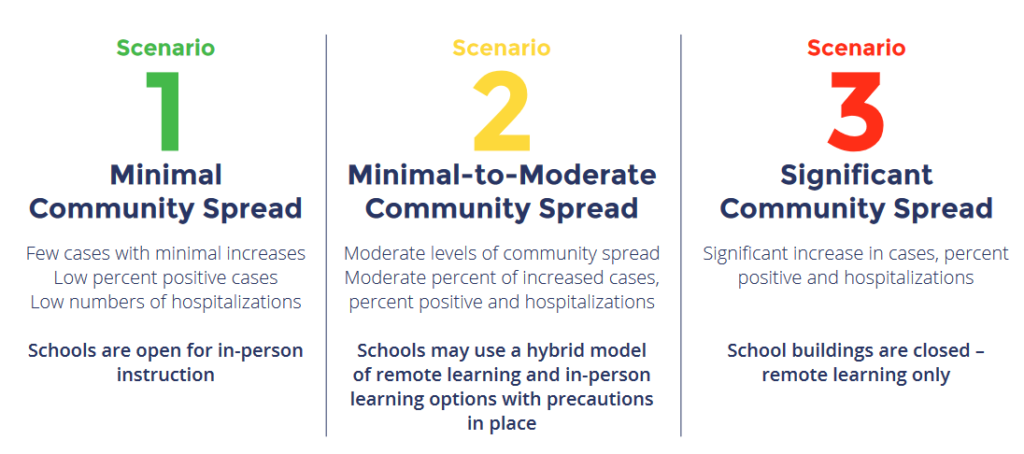
This week, Governor John Carney delivered his State of the State address and presented his FY22 recommended budget.
Gov. Carney started the education portion of his address by thanking the hard work and dedication of educators, school leaders, child care providers, and all school staff during the pandemic. He acknowledged that they continue to put their students’ needs above their own. He also acknowledged parents and caregivers for stepping in to help support children and fill the gaps this year.
Gov. Carney celebrated the important work spearheaded by the Delaware Department of Education and Department of Technology and Information to expand high-speed broadband access to students and close the digital divide. Over 25,000 low-income students are now connected with reliable internet access thanks to this initiative.
Unlike many other states, Delaware is not currently facing a budget shortfall. The proposed budget is based on the state’s most recent economic forecast of 3.5 percent growth. While Gov. Carney recommended growing the overall budget and the education budget, he emphasized that “directing surpluses into savings and one-time investments allowed for continuation of essential state services.”
On top of the challenges of the pandemic, Gov. Carney reiterated that his FY22 priority is to ensure the most vulnerable students get the education they need and deserve remains. Here are the education highlights that relate most closely to Student Success 2025 and the Vision Coalition’s 2021 legislative priorities that we heard, and resources to learn more.
1) Additional Funds for High-Needs Students; But Need for Holistic Fix Remains
What Governor Carney Proposed: Governor Carney ‘s top education priority is expanding the state’s Opportunity Funding investment in English learners and low-income students by $10 million this year, with the goal of reaching $60 million by 2024-25 school year per the terms of the school funding settlement reached in October. Carney highlighted that the existing Opportunity Funding investment has already made a difference in classrooms across the state to support low-income students, English learners, and the teachers that work with these students every day. The governor also proposed an additional investment in K-3 basic special education funding.
What Else You Need to Know: While it is true that Opportunity Funding does provide additional per-pupil funding for English learners and low-income students, it does not address or change Delaware’s underlying (inequitable) funding system. Delaware does not have a weighted funding system or formula, although some advocates, like Education Equity Delaware, are trying to change that. Join Education Equity Delaware by sending a letter directly to your legislator urging them to provide additional funding for students AND update Delaware’s out-of-date funding system.
2) Future Additional Financial Investments in Pre-K
What Governor Carney Proposed: Gov. Carney proposed doubling the state’s financial investment in the Early Childhood Assistance Program (ECAP), the state-funded mixed delivery pre-K program for three- and four-year-olds, by the 2023-24 school year. This would bring investments from $6 million to $12 million.
What Else You Need to Know: This proposed pre-K increase was catalyzed by the school funding settlement from the fall, which means the legislature must approve it in order to take effect. Though there is no additional funding for pre-K in the budget this year, legislators will have the opportunity to fund pre-K sooner than 2023-24, and increase funding to serve more students as many early learning advocates like First State Pre-K have called for. Delaware currently ranks 41st nationally for access to state-funded pre-K. We only serve 845 (four percent) three- and four-year-olds. Even doubling our pre-K investment to reach eight percent access, Delaware would still rank only 33rd, behind all our neighboring states.

3) Early Childhood Workers are Essential but Future Funding Uncertain
What the Governor Said: Carney included early childhood workers when thanking the state’s essential workers and shared that the administration has invested $135 million to date in federal CARES funding to keep providers open.
What Else You Need to Know: Given the times, reliable child care is more critical than ever. Yet, the industry has been severely impacted by the pandemic, with providers nationally and locally being forced to shut down. Local providers have raised concerns that without continued funding, they will have to lay off staff, close their doors, and stop serving children and families. Advocates have urged Gov. Carney through the #FundOurFuture campaign to continue investing based on enrollment figures (instead of attendance), and more in-line with the true cost of care to sustain and support early child care providers during the pandemic and through future budget years. As of January 29, increases in funding were only secured through the end of January 2021. Advocates are still waiting to hear a commitment of sustained funding.
As groups like the Delaware State Chamber of Commerce and others have noted, child care is a key ingredient in our economic recovery.
4) Funding for Career Pathways
What the Governor Said: Gov. Carney recommended a $1 million investment to Delaware Technical Community College to support the Office of Work-Based Learning and sustain career pathways in high-demand fields with immersive work experience. Broadly, the governor spoke about the importance of workforce development during the COVID-19 pandemic.
What Else You Need to Know: Delaware’s Pathways initiative is praised as a national leader for connecting K-12 education with higher education and employers. Delaware has grown from 27 students enrolled in an advanced manufacturing program in 2014 to more than 15,000 students across the state in over two dozen pathways linked to high-growth, high-demand sectors of the state economy. The state has relied largely on private and philanthropic dollars to catalyze the work-based learning component of the pathways program (including investments from Bloomberg Philanthropies, JPMorgan Chase and the DBREC), and this state investment will sustain the work underway and allow students to continue participating.
What Else We Anticipate
Keep an eye on this blog throughout legislative session for updates from our team on the most pressing education issues. In addition to the items listed above, the legislature is poised to consider a number of topics including school referendum reform, student enrollment and registration, student count methods, early childhood governance, and more.
(Read about why we think teacher residencies are becoming the next big thing in teacher prep.)
Anyone interested in submitting written comment or speaking at the upcoming Joint Finance Committee meetings can find more information here. Virtual budget hearings begin February 2nd.




